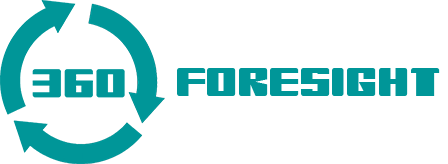For all of us strategic foresight practitioners and trend researchers: How often do you get asked if you can predict the future? Whether you have a glass ball to see the future? Or when looking back on scenario projects, how often do people want to know what became true and what was overlooked? These kind of questions reveals that most people are still unfamiliar with strategic foresight and its use in strategy development. Even when exposed to or involved in foresight projects, there is still a mental distance with this kind of work given that we come from a culture of knowledge production (reports) and evidence based, data driven decision making. But in case of the future, there are no facts or science based models with predictive powers. All methods in foresight build on the notion of enriching people’s understanding of future possibilities and therefore, help seeing new solutions and building better strategies. So how can we create better understanding of foresight as a practice and train people to build a foresight mindset.
Prepare for a participatory learning experience
Strategic foresight is a structured method to help people think about the future. The project management offers the framework, the main questions and the step-by-step approach. The choice of themes and storylines is decided by the participants in group sessions. Building on the insights and associative thinking of group members is a powerful experience and helps to create new knowledge. The art of listening and the willingness to respond to themes that are introduced by the group are a precondition to create this learning experience. This is fundamentally different from presenting expert knowledge to the group.
Embrace prototyping
The engagement process in creating scenarios is an important trajectory and involves many sessions where people work with prototypes and unfinished products. This enables co-creation where different people can have their say and help strengthening the scenarios. This is opposite to the way the research community operates. Research reports are presented when they are finished. They contain conclusions and recommendations. Discussions unfold as a response to the completed work, whereas co-creation can only happen when the piece on the table is not set in stone.
Focus on the strategic conversation
In creating scenarios it is helpful to involve a rich selection of experts with a broad collective knowledge base. They know about trends and developments in their area of work. However, scenarios don’t need to contain all the details that matter to researchers and scientists. Scenarios are created to help decision makers. Therefore, scenarios should contain those elements that trigger a strategic conversations. They should hint at topics that are relevant for influencing decision makers thinking processes.
Use the method to serve the conversation, instead of making the method the centrepiece
Every research discipline has their methods. For a young discipline as strategic foresight rigorous methods can help to convince those who new to foresight that it is indeed an established discipline. Despite the prestige that scientific methods can help to achieve, too much emphasis on methods can overshadow the real purpose of the foresight process. That is, supporting a strategic conversation to make decisions for a better future. Every scenario project has its own dynamics, influenced by the time frame the organisational structure and many other things. Responding adaptively to these dynamics with a rich toolset of methods and techniques is more important than following one method and one school of thought rigidly.
Build scenarios as true alternative futures instead of high-low, doom-gloom scenarios
Generally, people are unfamiliar with the idea of seeing the future as plural. They do know that the future is uncertain and precise predictions are impossible. They do know unexpected breakthrough can solve problems, but disaster can also strike and evil forces can bring the world to war. This line of thinking tends towards conceptualising scenarios as a bandwidth of possibilities. Economists, meteorologists and other professions that work with elaborated models used for forecasting often present a bandwidth of projections. However, scenario practice is the art of conceptualising alternative worldviews of how the future may unfold. These are stories of how the future could be different from what we know now, different from our business as usual way of looking at the future. The true value of scenario planning is to look beyond our models and projections and listen to alternative framings of the future. These alternative frames help to see new signals of change and give a different interpretation to current affairs.
A strategic foresight mindset is in many ways different from what most of us have learned in their scientific education. It takes effort to make this mental switch from a knowledge production mode to a participatory learning mode. Capacity building by training in strategic foresight can help to see when and where this practice can be helpful to decision making. Formal training as well as learning from communities help to establish ‘foresight literacy’ and reap the advantages of foresight practice in terms of having a richer framework for decisions that affect the future.
Author: Freija van Duijne


